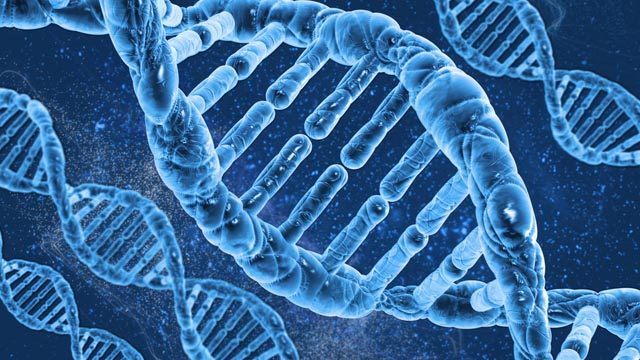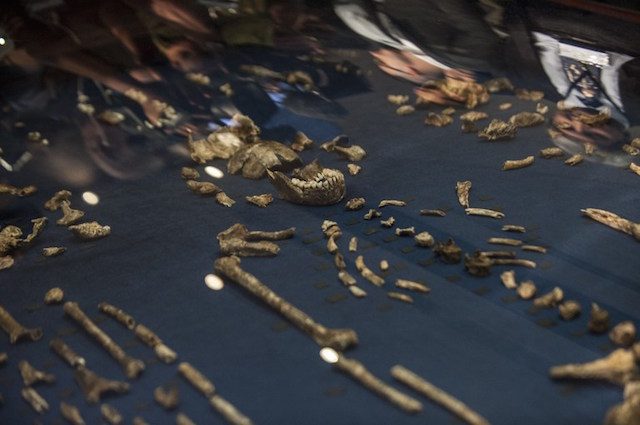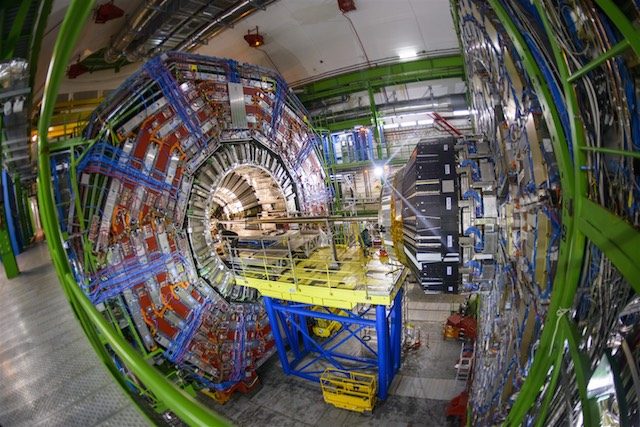SUMMARY
This is AI generated summarization, which may have errors. For context, always refer to the full article.

MANILA, Philippines – From rocket launches to (unwelcome) climate milestones, 2015 has been a notable year in science.
For the third year in a row, we asked the Mind Movers – a.k.a. the resident scientists – of the Mind Museum, the country’s leading museum dedicated to science, about what they think are the most top stories in the world of science this year.
Here are their choices for 2015’s top science stories:
New study reignites the debate on human genome editing
Inside each of your cells is your DNA which contains the sequence of molecular “letters” that make the alphabet that is you. We have known those “letters” for over two decades and now, science and technology has gone a step further, but not without controversy. News of Chinese scientists editing the genomes of human embryos last April, the first published study to do so, sparked an opinion piece in Nature, as many in the scientific community argued that modifying reproductive human cells – which can pass on any changes to the next generation – is unpredictable and poses dangerous risks.
The debate persists, although hundreds of scientists and bioethicists who attended the first international summit on human gene editing last week cautiously agreed that basic research should continue. – Cara Evangelista
‘Power plants,’ literally
 Incorporating mechanical elements into the body of an organism is no longer novel. Today’s biohackers already turn themselves into cyborgs, such as Neil Harbisson. Born color-blind, an antenna surgically implanted into his skull allows him to “hear” color.
Incorporating mechanical elements into the body of an organism is no longer novel. Today’s biohackers already turn themselves into cyborgs, such as Neil Harbisson. Born color-blind, an antenna surgically implanted into his skull allows him to “hear” color.
But in an unprecedented experiment fusing plant and machine, Swedish scientists from Linköping University have integrated functional circuitry into the network of a living plant. After submerging a rose into a polymer (a molecule with many repeating units) solution, the plant’s channels imbibed the polymer, which self-assembled into “wires.” With these, the scientists created circuits that could carry analog and digital electronic signals. They also integrated a similar polymer into a leaf; applying a voltage caused it to change colors.
The scientists suggest this technology may help them create plants that can power fuel cells. – Erin Mercado
Rising star human ancestor

In September, an international team of more than 60 scientists announced a brand new species of human ancestor called Homo naledi. The team, led by Lee Berger – research professor in the Evolutionary Studies Institute at the University of the Witwatersrand and a National Geographic Explorer-in-Residence, uncovered at least 15 individuals with partial skeletons, making it the largest discovery of pre-human relative in Africa.
H. naledi, whose name refers to Dinaledi Chamber in the Rising Star cave system where the bones were found, was believed to be lightweight, have walked upright, had a brain size almost the same as chimpanzee’s, had small simple teeth structures, and had human-like feet, hand, wrist, and lower limb but have a more primitive trunk, shoulder, pelvis, and hip. The researchers suggest that H. naledi may sit between Homo habilis and Homo erectus on the family tree. – Christer de Silva
(Water) bears of steel
If animals had superpowers, the tardigrade, or water bear, may have it all. Of the many environments it can survive in, a few of them are space, high radiation and pressure, extremely cold and hot temperatures, devoid of food and water for more than a week, and its body can dehydrate to only 3% water. The drying up ability of this microscopic creature, which grows on average up to just 1 mm (smaller than a grain of rice), is a possible factor of why its genome or genes are a mix of different organisms.
Scientists have finally sequenced the tardigrade genome. We normally know of genes being passed on from parent to offspring but some animals acquire its traits through horizontal gene transfer. This could mean that through the course of a tardigrade dehydrating and rehydrating its body again, genes from other bacteria, viruses, and other microorganisms get stitched up together with the other genes of the water bear that helped it survive in the first place. Now, wouldn’t that be a cool superpower to have? – Artha Ting
Restart of the LHC and the search for more exotic particles

The Large Hadron Collider (LHC) has been restarted at 13-14 TeV in order to probe deeper into the mysteries of matter. When it was at an energy of 7-8 TeV in 2012, the elusive Higgs Boson was discovered by CERN physicists. One TeV is equivalent to the energy of a flying mosquito. It might seem small but for miniscule protons, it is enough to smash them and subsequently produce the Higgs.
But there are a lot more questions: Is there a graviton? Why is there more matter than anti-matter? What is dark matter? To answer these, we need to see more pieces – and that requires more proton-smashing and more energy. The LHC’s detectors and cryogenic systems, among others, have all been upgraded to make sure that the largest experiment on earth will reveal to us even more things about the universe. – Uzzie Perez
First successful reusable rocket landing
The first successful “recycled” rocket just landed. Blue Origin’s New Shepard rocket made it to the history books by completing its first successful landing after being launched 330,000 feet into the air. New Shepard is a vertical take-off, vertical landing space vehicle capable of suborbital flight – speed of less than the orbital speed (orbital speed: 28,000 km/h for a 200 km circular orbit). Majority of rockets used in space programs are designed to be single-use only. Once the fuels are spent, the booster rockets will be dropped back to the Earth’s oceans. The use of reusable rockets such as New Shepard will not only make space missions cheaper but also open up the possibility of space flights for everyone. – Art
Evidence for liquid water found on Martian surface

NASA gave the world a pleasant shock this year when they announced the discovery of liquid water on Mars. It has been known for some years that the Red Planet has a lot of water ice hidden underneath its surface or tucked away in its poles. This is consistent with the theory favored by many areologists – those are the “geologists of Mars” – that Mars had oceans of liquid water during its past. This year, after months of studying Mars from orbit, NASA’s Mars Reconnaissance Orbiter was able to gather evidence that convinced many scientists of the presence of liquid water on present day Mars. If this evidence holds water, this will have huge implications for the possibility of life on Mars’ past and present. – Pecier Decierdo
World hits climate change milestones

This year, we have succeeded to almost double the “mess” in the atmosphere since the 1850’s. The concentration of carbon dioxide in the atmosphere passed the 400 ppm limit early this year, according to the World Meteorological Organization’s data released Nov. 9, 2015. This represents a 43% percent rise from the pre-industrial level of 278 ppm. In a separate report on the same day, the Met Office and Climactic Research Unit at the University of East Anglia announced that average surface temperatures have risen by just over 1 degree Celsius – halfway to the 2 degree Celsius limit which climate change policymakers are targeting .
Long-term implications for reaching these milestones include hotter temperatures, extreme weather events, rising sea levels, and increased ocean acidification. These implications threaten agriculture and security as climate patterns change, and the acidic ocean affects marine resources. – Hannsen Tan
Lower cognitive ability linked with belief in pseudo-profound ‘bullshit’
A curiously titled study, “On the reception and detection of pseudo-profound bullshit,” asked participants to judge how profound a statement was on a scale of 1 to 5. The statements were randomly generated by a computer, such as “Hidden meaning transforms unparalleled abstract beauty.” It turned out that the average score for a nonsense random statement was around 2.6, which was between “somewhat profound” and “fairly profound.”
The researchers also observed that, among participants, those likely to rate the random pseudo-profound statements were also more likely to have lower cognitive abilities. These participants were also more likely to believe in things without evidence, in religious and paranormal beliefs, alternative medicine, and in conspiracy theories. – Garrick Bercero
Antidepressant keeps roundworms young for a longer period of time
Back in 2007, scientists administered the antidepressant mianserin to a type of roundworm and discovered that its lifespan increased by thirty to forty percent. The 10-day old worm showed the gene expression of a three day old worm and looked seven days younger.
A study released on the online journal eLife looked into how this happened. They found that a phenomenon known today as transcriptional drift takes place. As we age, groups of genes working together in the same function start to change expression and drift towards opposite directions; the arrangement of gene expression is no longer coordinated and signs of deterioration start to manifest.
The discovery of this phenomenon provides a way to measure changes that occur as one ages and where they start in young adults – a useful tool to study age-related diseases. – Asia Aportadera
How about you: What are your top 10 science stories for 2015? – Rappler.com
Add a comment
How does this make you feel?
There are no comments yet. Add your comment to start the conversation.